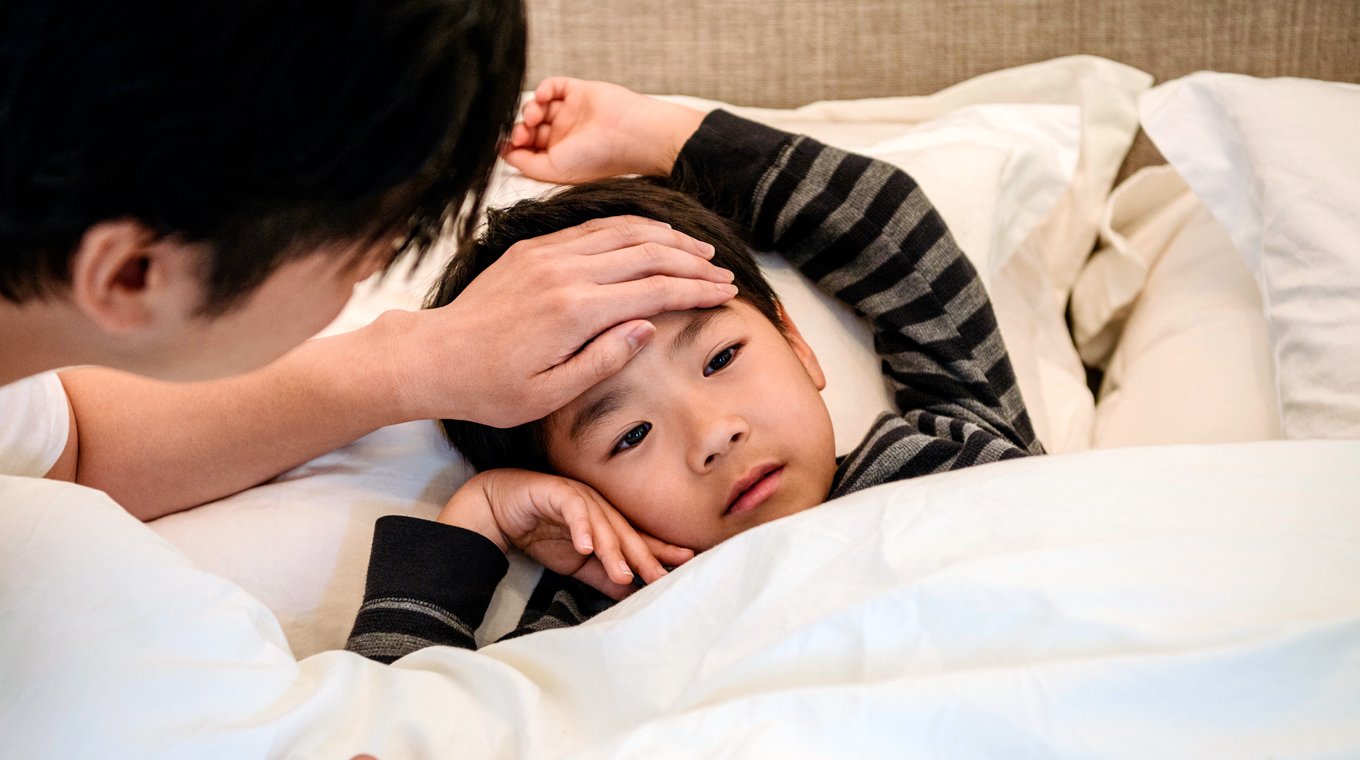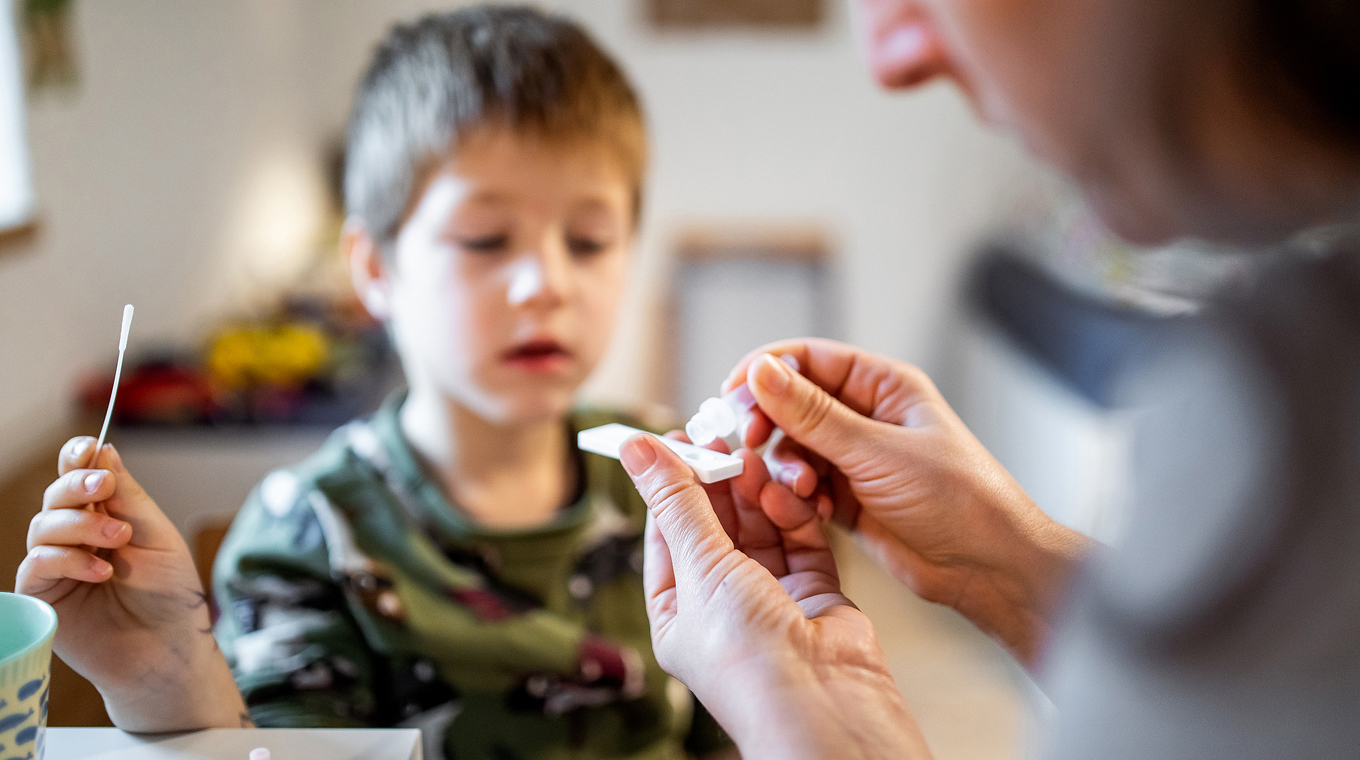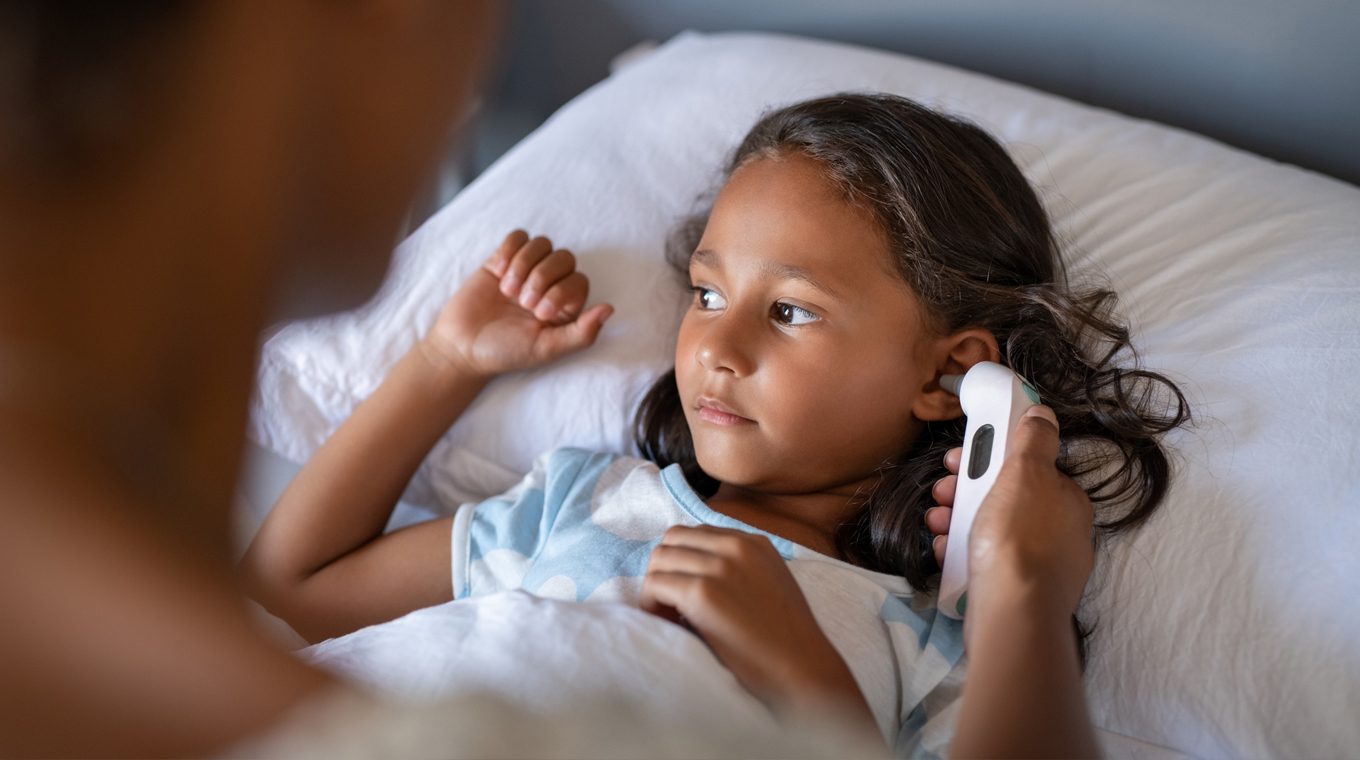
In this article
It’s been a long three years of dealing with COVID. Now that the world has opened up again and schools are back to in-person learning, kids are in constant contact with one another and all sorts of illnesses like the flu, RSV, and COVID are circulating. You may be wondering what to do when kids get COVID. Here are some steps to take if your child does test positive for the virus.
COVID isn’t over: Many kids are still getting it

According to the American Academy of Pediatrics, as of November 3, the last two weeks have seen an increase in reported positive COVID cases among children (from 23,000 to 30,000), accounting for 13.2% of all reported cases (children under 18 consist of 22.2% of the US population).
“Kids do better against COVID, but it is still important to keep a close eye on them because some children are still at risk of being hospitalized from trouble breathing or developing complications such as multisystem inflammatory syndrome in children (MIS-C),” Steph Lee, MD, MPH, FAAP told Mom.com.
Children with underlying medical conditions, such as diabetes and asthma, or those who require special health care, are at greater risk for a severe COVID infection. However, 50% of children hospitalized with COVID didn’t have any underlying health issues, according to the Centers for Disease Control and Prevention.
What are the first COVID symptoms in kids you should look for?

By now, most of us are familiar with the list of COVID symptoms, but just in case, here they are:
- Fever
- Headache
- Exhaustion
- Muscle pain or body aches
- Rash (usually on toes, hands, legs, ankles, feet)
- Sore throat or cough
- Shortness of breath
- Vomiting or nausea
- Diarrhea
- Loss of smell or taste
For some young children, one of the lesser known symptoms of COVID could be croup, which can sound like a barking cough, and stridor, or distressed breathing. In young babies, the most common symptom is either a low- or high-grade fever with other symptoms such as:
- Cough
- Vomiting
- Loss of appetite
- Rash
- Abdominal pain
- Diarrhea
Multisystem inflammatory syndrome in children (MIS-C)
Another concern is MIS-C, a condition where inflammation can occur in the heart, lungs, kidneys, brain, skin, eyes, or gastrointestinal system. In many cases, children develop MIS-C after contracting COVID or after contact with someone infected with the virus.
It’s important to note that Black and Hispanic kids consist of 57% of all MIS-C cases. If you suspect your child has MIS-C, please go see your medical professional ASAP. Those symptoms are:
- Fever
- Bloodshot eyes
- Lightheadedness or dizziness
- Abdominal pain or vomiting
- Diarrhea
- Skin rash
Your kid's got COVID: Now what?

As a parent, we all want our children to be healthy and safe — and when they get diagnosed with COVID, it can be super overwhelming. “Make sure not to go to day care or school so they can safely recover at home without infecting anyone else,” advised Dr. Lee. “Monitor their temperatures and their breathing. Make sure to provide plenty of fluids and rest.”
Here are some other quick and easy steps you can take.
Take a COVID test
First, if you suspect your child may have COVID from either their symptoms or exposure, please take a rapid antigen test or go get a PCR test. The rapid antigen test is much faster, but it’s not as sensitive as a PCR test. If the rapid test shows negative but your child persists in having symptoms, you may need to get a PCR test for more accurate results.
Talk to your doctor
Speak to your child’s doctor to relay your child’s symptoms and their level of severity. They can advise you of the next steps to take, and may also be able to prescribe over-the-counter or prescription medication that can ease your kid’s COVID symptoms.
Stay calm and help your child stay calm
COVID is a scary diagnosis, but children seem to experience a milder version of COVID if they’re otherwise healthy. Most children don’t have to be hospitalized and will recover at home just like if they had a mild flu or a cold.
Kids take their cues from adults. Keep your cool and your child will likely also not worry. If they are anxious, talk to them and help them to not feel afraid. Of course, if your child is experiencing any of the more severe symptoms of COVID or MIS-C, please seek professional care immediately.
Quarantine for at least five days
While that may be difficult if you have multiple children or live in a smaller space, try to keep your ill child in a separate room. Wear a face mask covering both your nose and mouth when interacting. Wipe down commonly touched surfaces, like door handles, faucets, and toilet handles, at least once a day with a bleach wipe. Wash your hands thoroughly with soap.
“We all knew we just had to hunker down for the next 10 days together as a family without doing anything or going anywhere,” Justin Lu, a Southern California father of two, told Mom.com. “We had a nurse on call, but prolonged fever, coughs, and fatigue were all to be expected. We knew not to freak out unless the kids showed signs of breathing problems.”
Get vaccinated or boosted
After your child has recovered, get vaccinated or boosted if they haven’t yet been. Now that COVID infections are increasing among children, the vaccine is the best way to keep your child and family safe from COVID. Though contracting COVID will provide some protection from reinfection, it is only brief and temporary.




